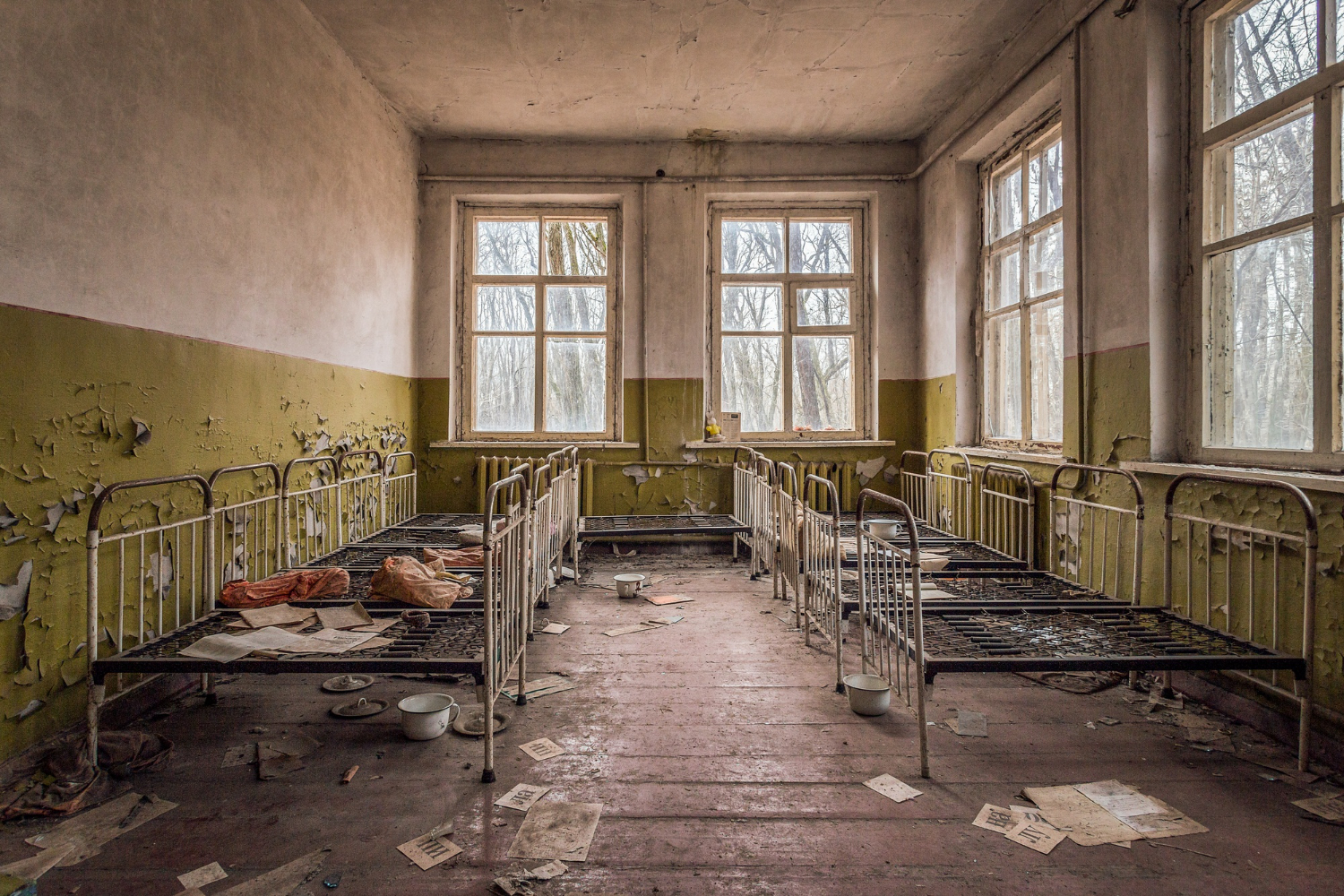Planet Earth is often plagued by natural disasters, from volcanoes and earthquakes, to hurricanes and tsunamis, natural disasters can be truly horrendous. Yet, more often than not, manmade disasters wreak even more havoc. This article is about Chernobyl, one of the worst manmade disasters of all time.
Before going into details about Chernobyl, let us know more about nuclear power plants. As we know, a power plant is built to generate power (electricity); in a nuclear plant, electricity is generated through nuclear fission, with uranium fuel at the core of a nuclear reactor. During nuclear fission, atoms are split then heat is produced; the heat is used to create steam, which is used in spinning the turbines, eventually generating electricity. For additional information concerning nuclear power plants, check out “Is Nuclear Energy the Answer to Global Warming?”.
Though Chernobyl was the first nuclear power plant in Ukraine, it was not the first in the Soviet Union; the plant had four RBMK-1000 reactors, which were built during 1970s and 1980s. The date 26 April 1986, was a tragic day for those operating the Chernobyl Nuclear Power Plant and for anyone in its proximity when the fourth reactor exploded, emitting dangerous radiations into the atmosphere.
The accident partially occurred due to a faulty design of the reactor; however, human error cannot be disregarded. During maintenance, safety procedures were not properly followed when operators wanted to check if the reactor could be cooled down during power outage. As a result, a surge of power inside the reactor led to the fateful explosion, which unfortunately led to the exposure of the nuclear core.
Death claimed many lives as a direct result of the explosion; yet, the implications of the exposure of a nuclear core, which amounts to 30% of Chernobyl’s uranium, were not limited to death. Huge numbers of people and other creatures suffered from Acute Radiation Syndrome resulting from exposure to high amounts of radiation over a short period of time. Moreover, children who consumed dairy products from cows that fed on contaminated grass developed thyroid cancer.
After the explosion of the Reactor, and in order to contain the damage, thousands of people were evacuated; until now, no one is allowed inside the area where the Reactor exploded and around it, which is known as the “Exclusion Zone”. It is estimated that the affected area can be habitable only after 20,000 years. On the other hand, affected areas around the Exclusion Zone have witnessed serious efforts for rehabilitation. As several countries were affected by that disaster—namely Belarus, Russia, and Ukraine—the scale of the disaster merited international cooperation.

Chernobyl Exclusion Zone. Image by Freepik.
One of the organizations that took the initiative to support the affected communities was the International Atomic Energy Agency (IAEA). The initiative known as the Chernobyl Forum was launched in cooperation with five UN organizations, the World Bank and the governments of the affected countries. The purpose was to scientifically evaluate the accident and provide solutions and recommendations involving special health care programs and controlling environmental damage.
Furthermore, on its website, the United Nations (UN) has included the economic rehabilitation of Chernobyl disaster affected areas as one of the goals in action under the Goal 8 of Sustainable Development: Decent Work and Economic Growth. Indeed, the UN has taken the lead in rehabilitating the area, creating “A Chernobyl Trust Fund” in 1991. The UN has also named the ten years from 2006–2016 the “Decade of Recovery and Sustainable Development of the Affected Regions.” Thanks to these efforts, nowadays, more than three decades following the disaster, the economic revival in the area is visible, with some spots becoming leading destinations for investors.
Addressing environmental and economic issues has not been enough though; people’s fears and concerns also had to be addressed, and the knowledge of how to deal with the situation had to be delivered to them. To that end, UN Agencies dedicated USD 2.5 million to raise awareness and deliver vital information to affected communities. The initiative attempts to transform scientific information into practical advice that the communities could use to lead a safe life. It is a long journey, but with proper international collaboration efforts, these areas can return back to normal.
Despite the potential dangers, nuclear power plants are considered an environmentally-friendly energy solution because they do not emit greenhouse gases. If the Chernobyl disaster was of any significance, it was to inform people how deadly nuclear energy can be if not well-managed, and how careful we should be when handling nuclear power plants.
References
chnpp.gov.ua
conserve-energy-future.com
eia.gov
express.co.uk
greenfacts.org
history.com
iaea.org
livescience.com
nationalgeographic.co.uk
nationalgeographic.com
news.un.org
world-nuclear.org
world-nuclear.org/safety
Cover Image by ASphotofamily on Freepik.